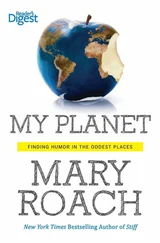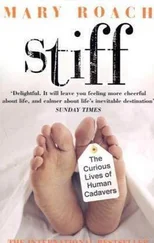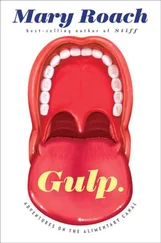A press release for the trilogy, I note, makes reference to just a single shot “in total weightlessness,” and it’s in The Uranus Experiment 3 . I get up off the couch to eject No. 2, but I can’t just now. An astronaut orgy, led by a Commander Wilson, has gone live on the giant wall screen at Mission Control. It’s being broadcast around the world. Scandal and chaos! NASA is shut down. The American president is on the phone. His suit is too big for him and he’s working from a cheap motel room. “This is the work of the KGB! I can smell it.”
Commander Wilson and Silvia Saint continue to flaunt the NASA Crew Code of Conduct in installment 3. Perhaps it’s my imagination, but Commander Wilson appears better endowed than he did in 1 and 2. Could this be the effects of weightlessness? Without gravity pulling the blood down into the lower half of the body, more of it remains in the upper half. Breasts are larger, and anecdotal information suggests penises enjoy the same plumping effect. “I had an erection so intense it was painful,” writes astronaut Mike Mullane in Riding Rockets. “I could have drilled through kryptonite.”
“I have heard others say exactly the opposite,” astronaut Roger Crouch told me, craftily leaving his own drill bit out of it. I called upon NASA physiologist John Charles to referee. Charles said that according to Buzz Aldrin, the Mercury and Gemini astronauts reported a definite lack of activity in that region. “They were going to give an award to the first man who demonstrated a response. Though how to prove it?” Charles mused. He sided with Aldrin and Crouch. And John Charles has medical science on his side. The dividing line between the part of the body that gets more fluid in zero gravity and the part that gets less is right around the diaphragm. It’s called the hydrostatic indifference point. “The male jumblies are below that point,” says Charles, “and so would seem to be drained, not engorged.”
This could have posed a challenge for The Uranus Experiment ’s male cast. But it didn’t, because guess what. Nothing was shot in zero gravity. The cameraman simply filmed the ejaculating commander on his back and then flipped the image upside down so he appears to be floating. I happen to know what a “cum shot in total weightlessness” would look like. I know because I’ve read the 1972 NASA study “Some Flow Properties of Foods in Null Gravity,” and those foods included butterscotch pudding and potato soup. The paper includes the dietician’s rendition of the zero-gravity cum shot: a demonstration of how a stream of milk “rapidly forms a perfect sphere.” Commander Wilson’s butterscotch pudding does not do this.
A fond but accusatory email to Berth Milton earned no reply.
THOUGH A BIOASTRONAUTICS researcher is unlikely to use a hand job to extract a sperm sample—or to preface it with the line “Hello, what a beautiful organ you have there”—the notion of a space agency studying the effects of weightlessness on sperm is a sound one. If the point of manned space exploration is to prepare us for ever-longer missions off Earth, then space agencies will need to fund research on the effects of zero gravity on human reproduction—not intercourse, but its consequences. One legitimate reason for space agencies to be uncomfortable with astronaut sex is that no one knows what biological perils await an embryo conceived in space. Beyond the protection of Earth’s atmosphere, cosmic and solar radiation levels rise significantly. Dividing cells are extremely sensitive to irradiation, thus the risk of mutations and miscarriages rises too.
Radiation is a concern even before cells start dividing. There have been official discussions at NASA about whether female astronauts should consider cryopreserving eggs before long flights. One paper suggested lining male astronauts’ flight pants with “organ-shielding…for the testes.” (John Charles says NASA has not embraced the “extraterrestrial codpiece,” or not yet anyway.) Studies of the victims of radioactive fallout from atomic bombs in Japan during World War II suggest that short trips into space shouldn’t cause infertility. Astronauts returning from six-month missions don’t appear to have had difficulties conceiving back on Earth. But radiation risks are cumulative. The longer you’re out there, the greater the dangers. That’s why astronauts selected for a two-to-three-year Mars mission would likely be, as John Charles puts it, older folks. “They’ve already had their kids, and they’ll be dead naturally before they really develop a whole lot of cancer.”
Is mammalian conception even possible in zero gravity? Not known. In 1988, bull sperm rode a European Space Agency rocket into orbit to see how weightlessness affected their motility. The sperm moved faster and more easily in zero gravity, which seemed to suggest that weightlessness might enhance fertility. Then along came Joseph Tash and his sea urchin splooge. Tash discovered that one of the enzymes that affects sperm motility—the one that tells them to stop wriggling their tails—was activated unusually slowly. In and of itself, not a big deal. But if weightlessness delayed one enzyme’s activation, Tash cautioned, it might delay others—including, say, the enzyme that readies the sperm to deposit their DNA packets. Eggs could be tripped up, as well. British sexologist Roy Levin has speculated that, without gravity, it could be difficult or impossible for the ovum to enter and make its way along the fallopian tube.
Why not send some rats into orbit and see what happens? The Soviet space agency did. In 1979, a group of rats was launched in an unmanned biosatellite. After launch, a compartment separator automatically pulled out, allowing male rats to do the opposite. None of the females came back to earth pregnant, though there were signs that conception had taken place. “What the study suggests is that certain early phases go awry,” says April Ronca, an obstetrician/gynecologist who studied mammalian pregnancy and birth in zero gravity at NASA Ames before leaving to take a post at Wake Forest University School of Medicine. “Maybe the placenta can’t form. Maybe the uterus can’t have proper implantation. Any step along the way could be compromised by zero gravity in ways that we haven’t foreseen. We know nothing.”
Setting aside the radiation dangers, a zero-gravity pregnancy would seem, simply on an intuitive level, to be less problematic. Given that pregnant women are sometimes confined to bed rest—a popular zero-gravity analog, as we’ve seen—and that fetuses float in fluid (another zero-gravity analog), weightlessness would not, on the face of it, appear to pose a threat to the developing fetus. Ronca sent pregnant rats into space [79] Ronca and her colleagues designed an investigator flight patch that featured a pregnant space shuttle surrounded by baby space shuttles. (Like the astronauts, the scientists involved in a mission traditionally commemorate their projects with sew-on patches.) NASA nixed the patch, even though it allowed a Homer Simpson “Sperm in Space” patch to fly. (The patch shows Homer’s head on a sperm tail. The wife of the sperm investigator has a family connection to Simpsons creator Matt Groening.) There may be no sex in space, but there is sexism.
for the final two weeks of gestation. Two days after landing, the females gave birth. (NASA stopped short of allowing birth in space, largely because of logistics. Someone would have had to build a birthing support for the females, and a nursing structure to keep the babies from floating away from the teat.) Other than some mild vestibular issues, the babies were essentially normal.
What wasn’t normal was the birth itself—even though the rats had come down from space by then. Rats who’d spent two weeks in space had fewer, and weaker, uterine contractions. In Ronca’s view, this is a dangerous difference. Contractions play an important role in a newborn’s adjustment to life outside the womb. The compressions of vaginal birth cause a huge release of stress hormones in the fetus; these are the same fight-or-flight hormones that fuel feats of extreme strength in adults. “This hormonal surge appears to be very important for getting physiological systems moving. All of a sudden a newborn has to breathe on its own, it has to figure out how to suckle from a nipple. If there aren’t enough contractions, the hormone release is smaller and the fetus has a harder time.” Studies have shown that infants born via planned C-section, with no contractions—as compared to those delivered vaginally—have a higher risk of respiratory distress and high blood pressure, a harder time expelling lung fluids, and delayed neurodevelopment. In other words, stressing an infant appears to be part of nature’s plan. (For this reason, Ronca is also not an advocate of water births.)
Читать дальше












